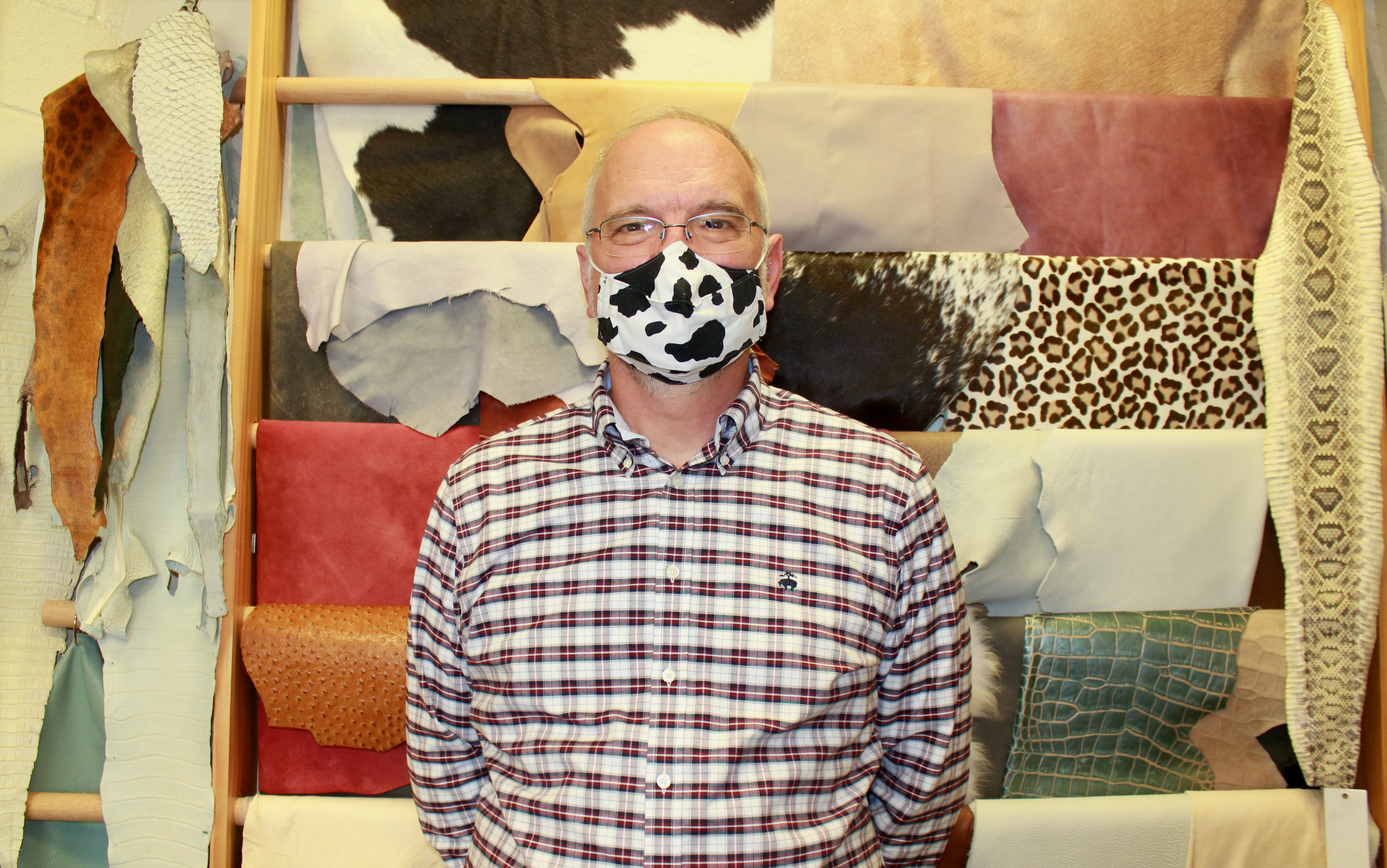Findings Staff Report | April 12, 2021
Standing before a floor-to-ceiling rack of leather samples in the lobby of the University of Cincinnati Leather Research Laboratory, Director Steven Lange rubs a piece of goat hide—made to look like blue crocodile skin—between his thumb and pointer finger.
“It’s amazing how many ways leather can be used and chemically changed,” says Lange, “and you wouldn’t believe what’s possible when a designer gets a hold of it.”

Lange is giving a tour of the wet lab, located north of campus in a research area known as Center Hill Research Facility. UC’s Leather Lab is the one-of-a-kind in the United States. He picks out a strip of emu leg leather from the wall of hides; points out snake, salmon, sheep and shark skins.
“We are the only lab in the country that specializes in all aspects of leather, providing unbiased research and testing,” Lange says. And the lab has been doing so since 1924, when it opened for the purpose of advancing the science of the leather industry and enhancing education in leather science. At the lab’s dedication, President Herbert Hoover called it “the most important step made by any of our trade associations in the direction of scientific research for the benefit of an entire industry.”
Over decades, the Leather Lab’s value has only grown.
In 1959, Leather Lab researcher Jean J. Tancous wrote the book, “Skin, Hide and Leather Defects,” which was updated in 1986, and continues to be the leading academic text on the subject. Through the years, the lab has worked closely with producers of automobile, aviation, garment, furniture and chamois leather, and, in 2019, created a DNA Species Identification method to identify what sort of leather one might be dealing with, in a partnership with Dr. Xiang Zhang at UC’s Genomics, Epigenomics and Sequencing Core.
Walking from room to room, Lange points out machines and technologies that perform a myriad of performance and quality tests. Leather destined to be used to make gloves and footwear for the U.S. military is sent here to be tested. Companies from around the world send samples to the lab to see whether a product is up to their standards. The lab is ISO 17025 certified.
Leather of any kind can be tested for durability, waterproof ability, fire resistance and much more. Scientists can also verify whether there are any hazardous chemicals or pesky bacteria on the leather and whether it can withstand heat, cold—even imitation sweat.
Normally, there are two popular courses going on: Leather Orientation and an Introduction to Leather Testing. Since becoming director in 2013, Lange has instructed more than 200 students from all over the United States and some foreign countries in these hands-on courses, on hold in 2021 because of the novel coronavirus. The lab often has student workers and those doing co-ops.
Prior to leading the lab, Lange worked 25 years in the automotive leather industry in tannery, finishing, cutting/wrapping operations and quality assurance. He brought his own problems to the lab then. Now, he leads the research team that conducts projects with roughly 150 clients a year and is also editor of the Journal of the American Leather Chemists Association.
“A long line of leather scientists at the University of Cincinnati have made a tangible impression on the leather industry and leather science since this operation began as The Tanner’s Lab in 1924,” says Vice President for Research Patrick Limbach. “Times have changed but Steve and his team have the same mission: To provide leather testing and technology training at the highest level.”
I ask Lange, what’s the strongest leather? “Probably kangaroo,” he says.
However, lionfish—one of the lab’s current projects—is proving to be surprisingly strong. The Florida Fish and Wildlife Conservation Commission encourages the removal of these invasive fish from the water when possible, to limit their negative impact on native marine life and ecosystems.
The Leather Lab is developing a tanning formulation and process for lionfish skin with a Florida-based brand LeoX Leather, which wants to find sustainable ways to use lionfish and help keep its populations at bay to protect the world’s coral reefs. The lab is testing the strength of lionfish skin as a potential wristwatch band.
“Really, leather can do a lot of amazing things,” Lange says, “and we’re here to find new and exciting ways to use it.”
For more information about the Leather Research Laboratory, visit www.leatherusa.org.